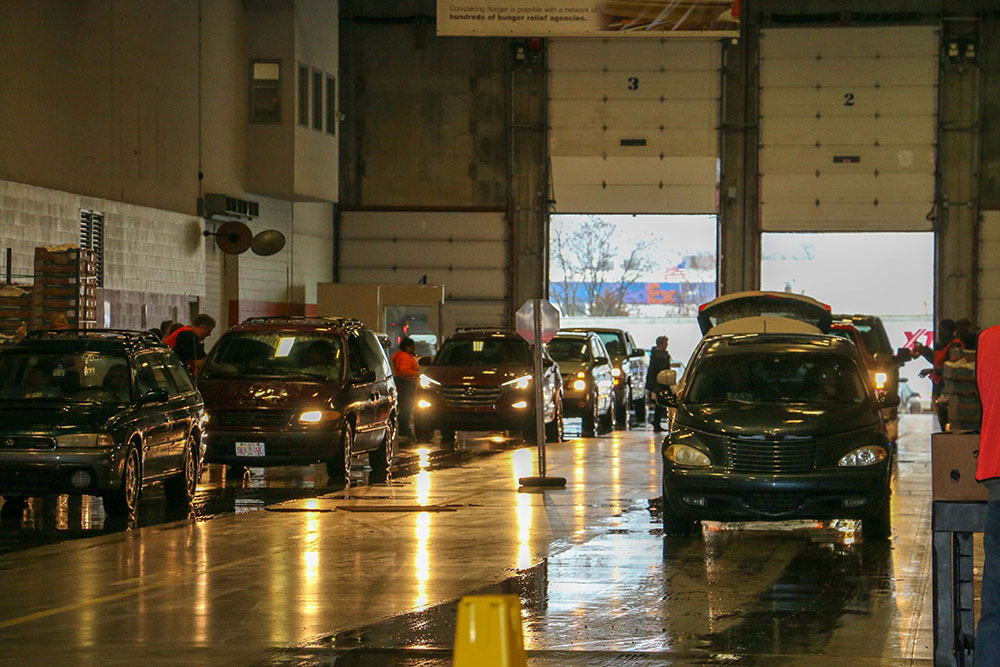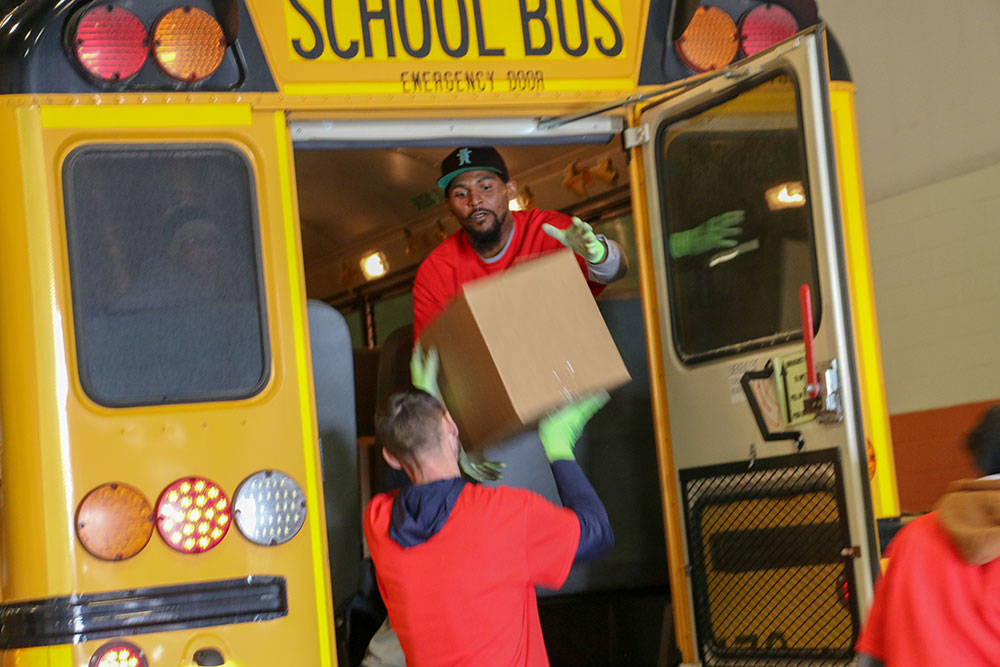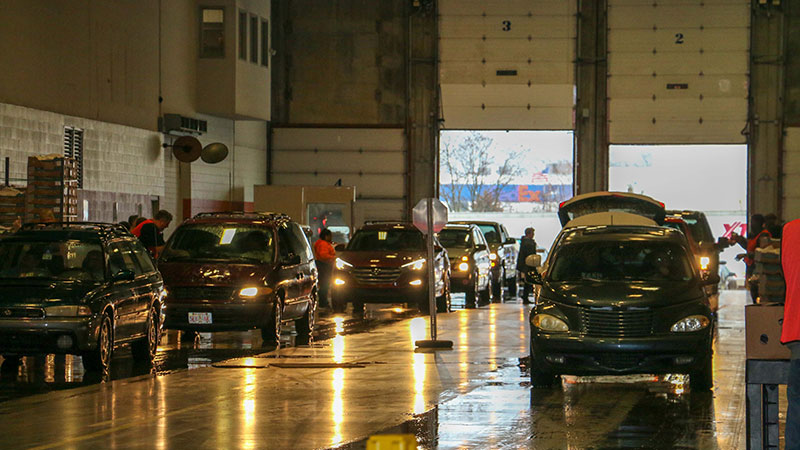Shaken by a worldwide pandemic, a hurdle the local food bank had never faced in its four decades of service, Gleaners started searching for ways to ensure that our most vulnerable residents—children—would still be fed.
One out of five Hoosiers who are food insecure rely on school meal programs. When the schools closed due to the coronavirus, so did the 57 school-based pantries operated by Gleaners.
That didn’t only affect the children. More than half of those pantries serve the families in their surrounding neighborhoods year-round.

“Those are anchor pantries for those neighborhoods,” said Gleaners CEO John Elliott. “And when those schools were closed, those pantries closed.”
Enter the family meal box – filled with canned and boxed foods and, in some cases, the fresh produce and frozen meat. Lumina Foundation and other donors provided grants that were key in the positive impact these boxed meals have made.
Lumina’s grant went specifically to help students enrolled at Indianapolis Public Schools and their families, who are on free and reduced lunch programs.
In its first week, Gleaners served 20,000 family meal boxes throughout the 21 counties it covers. By week two, that had ramped up to 30,000 boxes.
The entire program has been a major change to the way Gleaners distributes food.
“One thing that the pandemic has done is force every program, every job or role at Gleaners to change,” said Elliott. “There is not a single hunger-relief program that’s operating the same way it was before COVID-19.”
The meal boxes, said Elliott, were the largest-scale change for Gleaners during the coronavirus.
Before COVID-19, Gleaners didn’t offer family meal boxes, opting instead for the school pantry model. That allowed families to have the freshest, healthiest options and the most variety. It mirrored a retail setting, with customers coming in to hand-pick what they wanted.
Now, the meal boxes are packed with the same foods for everyone, and then delivered to customers in a drive-up setting. A patron pulls up, pops the car trunk, and the box is put inside.
The families that Gleaners serves have shared time and time again how grateful they are for the boxed meals.
Beyond the school portion of its service, Gleaners has seen increased need at all of its programs during the pandemic. The food pantry it operates out of its warehouse, for example, used to see about 400 people a day. Since COVID-19, it has regularly served 2,000 daily, said Elliott.

And he urges people to remember that the hunger won’t end when the pandemic does.
Every year, hundreds of thousands of Hoosiers depend on food and other critical grocery products provided by Gleaners. The food bank supplies items to hunger-relief agencies and schools throughout 21 counties in central and southeastern Indiana.
It’s the exact mission its founders were hoping for when Gleaners was launched in 1980 by a group of citizens who believed no one should go hungry.
Since that time, Gleaners has distributed more than 520 million pounds of food and critical grocery items. It does so through a network of 550 food pantries, soup kitchens, schools, and community partners.
Gleaners also serves Indiana children with programs, such as the BackSacks: Weekend Food for Kids, Mobile Pantry, Summer Meals for Kids, CARE, Produce Hope, and more.
Learn more about Gleaners Food Bank of Indiana.
